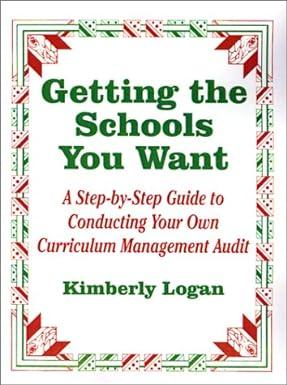Question
Long Beach Bridge Toll Theft Long Beach Bridge (a non-public company) is a private company that operates a major bridge providing pedestrian and motor crossing.
Long Beach Bridge Toll Theft
Long Beach Bridge (a non-public company) is a private company that operates a major bridge providing pedestrian and motor crossing. Pedestrians can use the bridge for free however, crossing vehicles are required to pay a toll based on the type of vehicle: $2 for passenger cars ; $5 for commercial trucks; and $0 (free) for all electric vehicles. Toll revenues support the maintenance and upkeep of the bridge.
The bridge has 4 easy pass lanes and 10 cash collecting toll booths; several of the cash booths are automated for exact change while others are manually serviced by Long Beach Bridge employees. Each toll booth has an automated counting mechanism to monitor the number of vehicles crossing each day. Periodically and throughout each day, supervisors collect accumulated tolls. The funds are provided to an on-site, independent contractor hired by Long Beach Bridge to perform cash count and reconciliation functions. The funds are then transferred daily to a local depository institution.
Approximately two years ago, several toll collectors and their supervisors conspired to steal toll monies and employees of the independent cash count contractor agreed to participate in the scheme. In order to cover their theft, the cash count contractors altered the daily reports, including the vehicle counting records and other cash reconciliation records.
The thefts continued until one toll collector felt he was not receiving his fair share of the money and anonymously called the Long Beach Bridge offices and reported the scheme.
The record alteration process was so effective that reconstruction of the original transactions was impossible. To estimate the amounts of stollen tolls, Long Beach Bridge management engaged a consultant who perform a demographic study of bridge use over a period of time. Long Beach Bridge management used this study to arrive at their estimate of tolls lost.
Current year cash theft losses were estimated to be $800,000 and prior year cash theft losses were estimated to be $1.5 million. Toll revenues reported for the current year and the prior year were $4.2 million and $3.7 million, respectively. In preparing the financial statements of these two years, Long Beach Bridge management included their estimate of stolen revenues within Total Revenues and reported the same amount as Estimated Losses Due to Theft Loss under operating expenses. This is summarized as follows:
|
Revenues | Current Year | Prior Year (Restated) |
| Revenue as originally recorded | $4,200,000 | $3,700,000 |
| Estimated toll revenue not recorded | 800,000 | 1,500,000 |
| Total revenue as adjusted | $5,300,000 | $5,200,000 (as restated) |
| Operating Expenses Estimated losses due to theft |
800,000 |
1,500,000 (as restated) |
There is no argument that some amount of tolls were collected and diverted to the benefit of the thieves; however, the amount stolen and when it was stolen cannot be determined from the financial or other records. Long Beach Bridge management believes that the financial statements should include their estimate of tolls stolen with a related expense in order to properly report the operations of the bridge. Future periods will be reported inconsistently with the current and prior years if they were to exclude the estimated revenue and losses. At this time, revenue is insignificant from the easy pass booths, and there are no theft questions with respect to the revenue from these booths.
The estimated amount of revenue lost was calculated and recorded as revenue in the process of finalizing the financial statements for the current year. The prior year financial statements were issued before the matter became known so management report the prior year financial statements in the current year report as restated (to correct the error).
Long Beach Bridge had profitable operations in the current year and prior five years, despite the theft losses. There appears to be no reason to question the integrity of Long Beach Bridge management - collusion among the toll collectors, supervisors and cash count contractors allowed the theft to go undetected and to circumvent internal controls. Long Beach Bridge management has taken appropriate action to remedy the situation and has enhanced controls even further.
Analysis
You are part of the audit team, performing full scope audits of the financial statements of Long Beach Bridge Company. You are looking at how the toll thefts should be treated in the financial statements.
Question. How should the toll theft of the cash revenue be handled in the financial statements of Long Beach Bridge?
Your analysis need only focus on the reporting of revenue (and associated loss due to theft if you conclude the revenue should be recognized).
You do NOT need to address the issue of restating the prior year financial statements.
You do NOT need to address the issues would impact the audit (i.e., how would this be audited).
Additional information to consider:
The Company prepares their financial statements in accordance with GAAP (therefore do not assume that the company's financial statements are on the cash-basis and do not assume they could use the cash-basis as an accounting alternative.)
Disregard any tax effects of the accounting.
The financial statements prepared by management include the adjustments to record the estimated revenue and the loss in the current year and in the prior year (i.e.: management has already recorded the journal entry to reflect the adjustment based on the consultant's study).
Prepare a memo for the audit work papers to document the accounting alternatives considered, your analysis and conclusions.
Step by Step Solution
There are 3 Steps involved in it
Step: 1

Get Instant Access to Expert-Tailored Solutions
See step-by-step solutions with expert insights and AI powered tools for academic success
Step: 2

Step: 3

Ace Your Homework with AI
Get the answers you need in no time with our AI-driven, step-by-step assistance
Get Started


